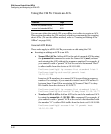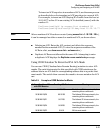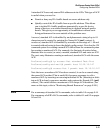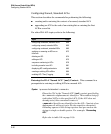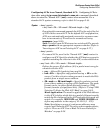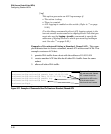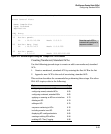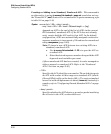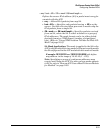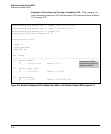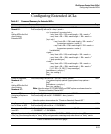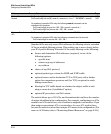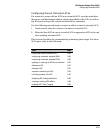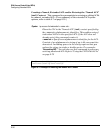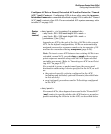
IPv4 Access Control Lists (ACLs)
Configuring Standard ACLs
Creating or Adding to an Standard, Numbered ACL. This command is
an alternative to using ip access-list standard < name-str > and does not use
the “Named ACL” (nacl) context. For a standard ACL syntax summary, refer
to table 9-6 on page 9-44.
Syntax: access-list < 1-99 > < deny | permit >
< any | host < SA > | SA < mask | SA/mask-length >> [log]
Appends an ACE to the end of the list of ACEs in the current
IPv4 standard, numbered ACL. If the ACL does not already
exist, creates both the ACL and its first ACE. In the default
configuration, ACEs are automatically assigned consecutive
sequence numbers in increments of 10 and can be renumbered
using resequence (page 9-80).
Note: To insert a new ACE between two existing ACEs in a
standard, numbered ACL:
a. Use ip access list extended < 1 - 99 > to open the ACL as
a named ACL.
b. Enter the desired sequence number along with the ACE
keywords and variables you want.
(After a numbered ACL has been created, it can be managed as
either a named or numbered ACL. Refer to the “Numbered
ACLs” list item on page 9-42.)
< 1-99 >
Specifies the ACL identifier as a number. The switch interprets
an ACL with a value in this range as a standard ACL (which
filters all IPv4 traffic on the basis of SA). (To create a standard
access list with an alphanumeric name (name-str) instead of a
number, refer to “Configuring Named, Standard ACLs” on page
9-46.)
< deny | permit >
Specifies whether the ACE denies or permits a packet matching
the criteria in the ACE, as described next.
9-50



